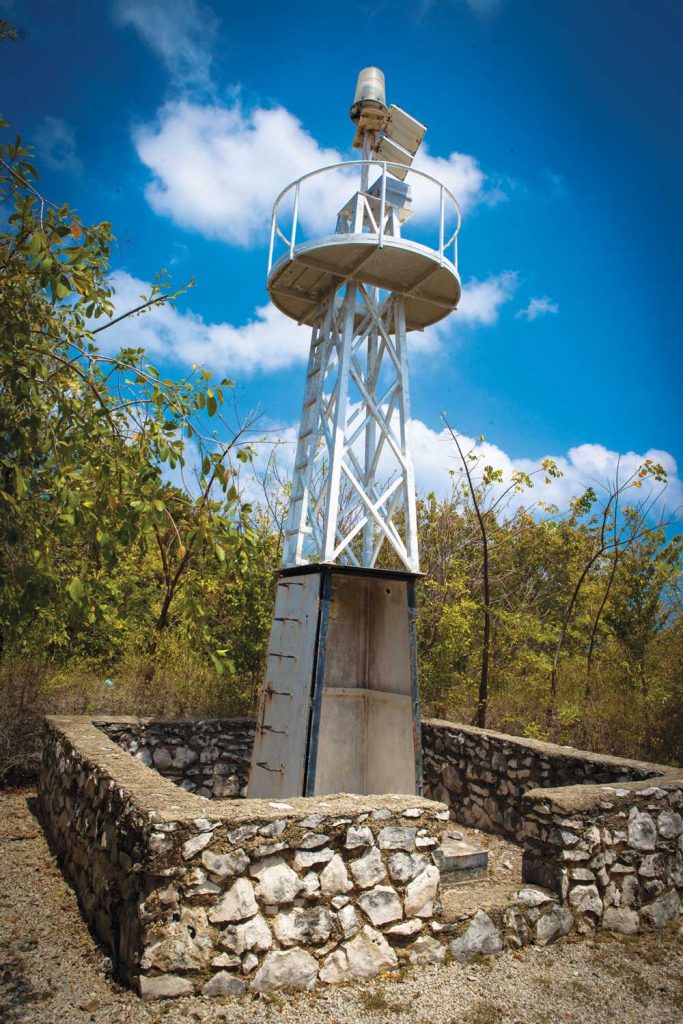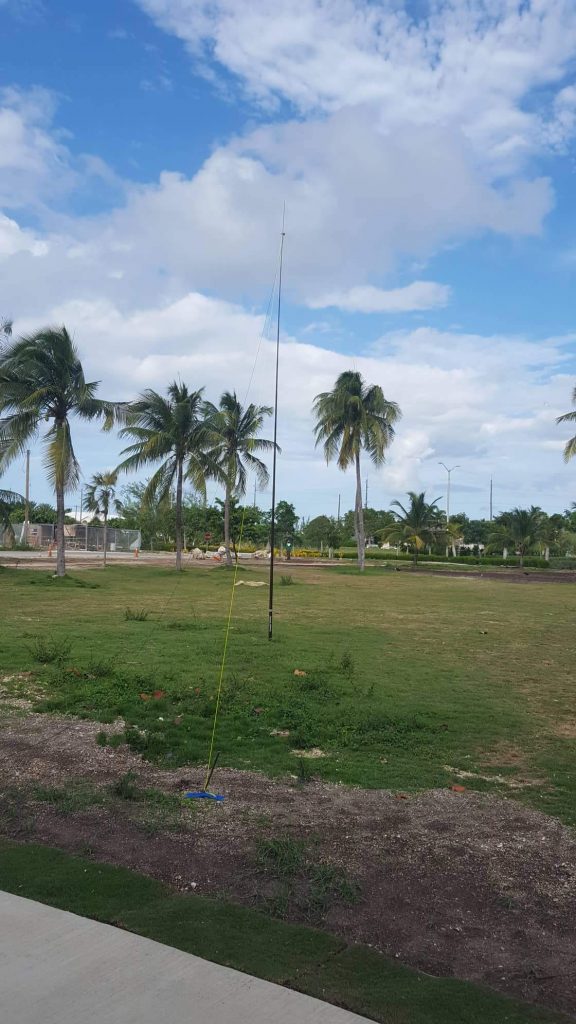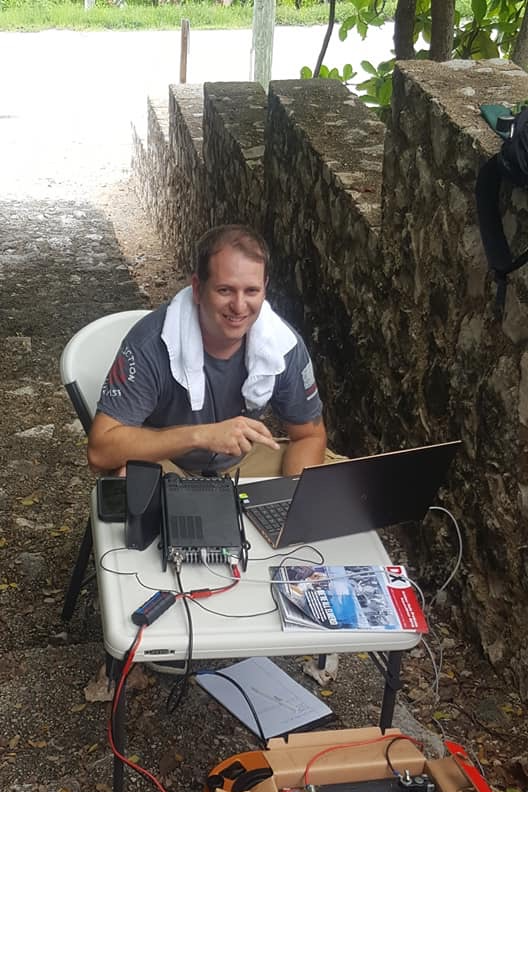For operators who have always wanted to venture beyond the confines of the shack, Ham Radio offers a world of opportunities—breathtaking views, exotic locales, historic sites, and the prestige and challenge of being a sought-after station on the air.
If you’ve dreamed about working a pileup but don’t have the means—or desire—to operate from a wooden platform above the rising waters of Scarborough Reef in the South China Sea, there are still plenty of ways to make memories, and QSOs, as a portable operator. Here are a few programs to consider:
US Islands Awards
Celebrating its 25th anniversary in 2019, the US Islands (USI) Awards Program has given Hams across the country the chance to activate and chase a range of river, lake, and ocean shore islands, from the ones everyone knows (Manhattan, Maui, Key West) to spots perhaps only familiar to the peripatetic amateur operator (Cow, Bartoo, Beacon Rock).
More than 3,200 islands (currently 2,290 of them qualified) dotting all 50 states, territories, and protectorates give Hams ample opportunity to take an affordable mini-vacation and become the Big Station on the Air as avid island chasers vie for honors such as the USI Honor Roll (QSOs with 100 islands and protectorates); Work All State Islands Award; and Work Ten Award (10 islands from one state).
From the USI website: “The USI was formed in 1994 to further enhance ‘island chasing’ that had become so popular on the amateur radio bands. The goal of the USI program is to promote a simple but effective system of island chasing and activating in a professional radio-manner and to operate totally on the ‘honor system’. The USI warmly welcomes all ham radio operators, shortwave listeners (SWL), and island enthusiasts to yet another facet of island chasing.”
According to USI rules, in order to activate an island, it must first be qualified. Qualification requires a minimum of 25 QSOs (including at least two DXCC entities) in any mode. Read all the rules here, including what qualifies as an island under USI criteria, or click here to request an addition to the list of islands.
If you think you’re ready to work Antelope Island in Utah’s Great Salt Lake or Chacaloochee Island in Alabama’s Mobile Bay, remember this: No Ham is an Island! That means everyone—even experienced amateurs—can benefit from the advice of another friendly operator. As always, the Elmers at DX Engineering are ready with wise guidance on what you’ll need to become a champion island chaser or an award-winning activator!
IOTA, Islands on the Air
The IOTA program was established in 1964 to encourage Amateur Radio operators to contact stations located on the world’s 1,200 or so island groups. It is administered by Islands On The Air Ltd in partnership with the Radio Society of Great Britain.
The program takes center stage next month with the rare activation of South Orkney Islands (February 20 to March 5) by the Perseverance DX Group. South Orkney Islands’ IOTA reference number is AN-008. Get more information about South Orkney Islands from the IOTA official site. You’ll find complete details about the 2020 VP8PJ DXpedition here.
Think you’re a master at world geography? The IOTA list of islands is enough to humble the most formidable Jeopardy ringer. IOTA enthusiasts strive to make contact with as many island groups as possible, including Chukchi Sea Coast East group, Hokkaido’s Coastal Islands, Estremadura Province group, Vesteralen Islands/Troms County South group, Niedersachsen State group and many others. See the entire list here. Top island chasers receive recognition for 750 and 1,000 contacts, plus the satisfaction of reaching parts of the globe most folks don’t even know exist.
For complete rules, lists of islands, the most-wanted island groups and more, visit the official IOTA website.
Lighthouses
The Amateur Radio Lighthouse Society (ARLHS), founded in 2000 by Jim Weidner, K2JXW, is celebrating its 20th year of highlighting maritime communications, amateur radio, lighthouses, and lightships.
From the ARLHS website, “Its members travel to lighthouses around the world where they operate amateur radio equipment at or near the light.”
With more than 1,665 members, the organization has worked “to promote public awareness of the role ham radio and light beacons have played in assisting and maintaining safety at sea; preserve the heritage and history of lighthouses and lightships; aid in preserving those lights in danger of destruction or decay; and recognize the keepers of the lights as maritime heroes.”
The group also maintains the World List of Lights—a collection of more than 15,400 lighthouses in 233 Amateur Radio call areas. Find the entire list here—from the Absecon Lighthouse in New Jersey to the Zub Lighthouse in Croatia.
Sound like a good time? Just ask Tim Haniwalt, N3DL. It is!
Using a Yaesu FT-891 HF/50MHz All Mode Mobile Transceiver, a SOTABeams’ 40/20 meter dipole antenna, a SOTABeams’ Tactical 7000hds Compact Heavy-Duty Telescopic Mast, and DX Engineering RG-8X Coaxial Cable, he operated near a century-old lighthouse while on vacation on Grand Cayman island.
“I activated the Gorling Bluff East End Lighthouse (Cay-001),” he said. “This lighthouse had never been activated. I logged 127 contacts while set up there and also had an aeronautical mobile contact (OA4DOA/AM) make contact while flying from Cancun, Mexico to Lima, Peru while on an airbus A320.”

Lighthouse enthusiasts will also want to mark their calendars for the 2020 International Lighthouse Lightship Weekend (ILLW) to be held 00.01 UTC August 22 to 2400 UTC August 23. Per the ILLW website, the 48-hour event, now in its 22nd year, “attracts over 500 lighthouse entries located in over 40 countries. It is one of the most popular international amateur radio events in existence probably because there are very few rules and it is not the usual contest type event. It is also free and there are no prizes for contacting large numbers of other stations.”
Beaches on the Air
For some, operating from a sun-drenched beach is the only way to truly go “barefoot”! Beaches on the Air is an award program offering certificates and honor-roll recognition for beach activators and chasers. From its website:
“Our program currently lists more than 30,000 beaches, often drawn from official sources, such as environmental protection agencies, but also allows the addition of individual beaches sponsored by users.”
While on Grand Cayman, Tim, N3DL, activated 7 Mile Beach along with friend and fellow Ham Phil Bodden, ZF1PB, who lives on the island.

“This was the first time that 7 Mile Beach had ever been activated,” he explained. “There were several channels that I had to go through in order to get it added to the Beaches on the Air program. I became a sponsor for 7 Mile Beach so that it could be added to the system and officially be on the Beaches on the Air site. For anyone interested in this location, the beach number is 37563. I am proud to say that I had 74 contacts while at 7 Mile Beach in the three hours that I was set up there.”
He added, “I also had the pleasure of operating from the contest station on Grand Cayman (IOTA NA-016). I logged 85 contacts. It was truly a great, and fun, experience!”
Click here for many more details on Beaches on the Air. Also, for other Ham Radio adventures, look into the World Castle Awards, Parks on the Air, Summits on the Air, and many others
Bottom line: What are you waiting for? Get on the air and get some fresh air!


